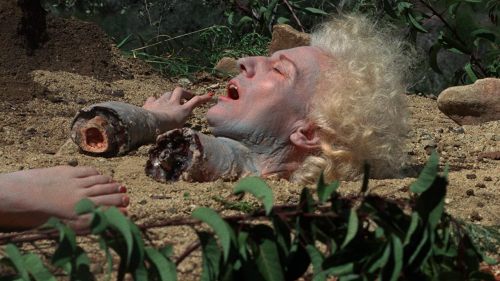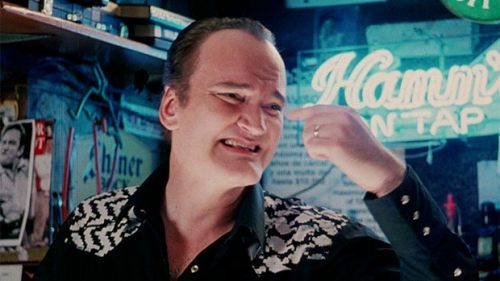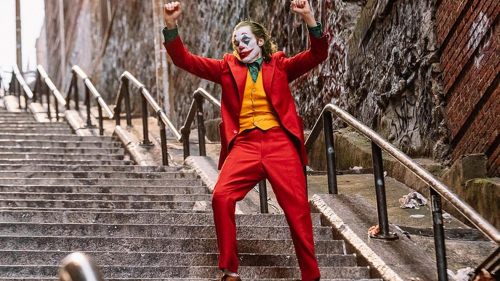ONCE UPON A TIME IN HOLLYWOOD’S Zoe Bell Discusses Life In The Tarantino-Verse
Mild spoilers for Once Upon a Time in Hollywood.
It’s hard to think of actress and stunt woman Zoe Bell and not think of her on screen persona from Death Proof - kinda goofy, indefatigably cheerful, quite likely accident prone, but absolutely fearless. Quentin Tarantino, who first collaborated with her on Kill Bill as Uma Thurman’s fight double, subsequently reinforced that perception with her role in The Hateful Eight, where she played the bright-eyed Six-Horse Judy. But in Once Upon A Time In Hollywood, Bell shows audiences a markedly different side of herself as Janet, wife of Kurt Russell’s stunt coordinator, Randy - a woman with little tolerance and no patience for Brad Pitt’s Cliff Booth, especially after he uses a work opportunity to square off against Bruce Lee using her car as a backdrop.
While Tarantino’s latest generates opinions, think pieces and deep dives at an increasing pace, we spoke with Bell earlier this week about how she landed the opportunity to act opposite Russell and dress down a handful of Hollywood’s biggest stars. In addition to talking about some of the ambiguities of her scene - the infamous showdown with Bruce Lee - she talked about her own feelings of responsibility as offscreen stunt coordinator, and reflected on the film’s blend of truth and Tinseltown lore to explore a bygone era in a constantly changing industry from within the inner circle of one of the most idiosyncratic and singular filmmakers in the world.
It was an exciting surprise to get to see you play a different kind of character after two Tarantino movies where you play this sort of ray of sunshine. Did you ask for something different, or did he come to you and present this role?
It turns out I do okay just playing an angry self-righteous woman. But it came about quite spontaneously. Stunt coordinating was maybe sort of obvious, it was obviously my priority, and it was definitely enough on my plate that I wasn't desperate for a role. I just love being in his films and really wanted to be in this one. But this one came about on the day. I had put fight options down on DVD to show him to then talk about. Part of the process is going back and forth, and Randy interrupts the fight originally. And so I had played Kurt Russell's role in our mock up videos of potential flight choreography, and I'm just such a massive fan of him on screen as well as in real life that I just felt full permission to do my best Kurt Russell and really enjoyed myself. Because I didn’t perceive it as auditioning, I think I just felt really comfortable and confident to just give it 150% and I went all out and had an absolute blast. And then of course it’s Quentin’s brain, so he's like, well if Zoe plays Janet, that means Zoe’s married to Kurt, which is a whole Death Proof thing. Also, if she’s my stunt coordinator on the movie, she’s the fight choreographer’s wife on this movie. There's just all these brilliant little meta tie-ins.So when it came to the day, he was like, right, Zoe, we need to get you in costume and makeup - and did you bring your cowboy hat? I was like, yes. And I'm about to bring my ‘A’ game because I'm about to be on screen with an ‘A’ class cast and I'm going to just do my best. And it was an absolute blast!
In the scene in which Janet appears, there's been a lot of conversation around whether it's a flashback or it's a daydream. Did Quentin talk about how it fits into the movie, or was that important?
No, you just go through the process that you go through because - I’ve been working with Quentin for ages, so there's certain elements of a communication or processing that I do or we do that I don't really think about. There’s sort of an unspoken [thing]; I don't sit down with a Tarantino script and break it down as just the fan that I am. I read it knowing what I know about my experience of working with him, and hearing his voice. There's all these things that happen without my conscious knowledge of it. But honestly, if it's on the page, it's going to be on the screen. And however he describes it to me, that's what I want to want to imbue it with. So it's sort of like once I've watched the movie, then as a fan, I could go back and be like, “hey, did you mean…?” because honestly to put it on the screen, it's irrelevant whether it's the flashback or a daydream or an acid trip. I need it to be as authentic to whatever those characters are experiencing and whatever the director's vision is in that moment. I don't need to have inside knowledge or background information unless it somehow informs the story or the action of the scene. So I've been really enjoying reading some of these articles, having now watched the movie three times. And it's really interesting hearing other people's takes on what's acceptable, what's not, what it might mean, what it obviously means. There's so much on Quentin's page and on Quentin's screen that's yours to interpret, and I kind of dig it.
Was there anyone from the era or anyone else that you drew upon at all as inspiration for the character that you played?
I didn't sit there and prepare based on strong women behind the scenes that I have known consciously, but when I watch it I'm like, oh, I know, I know that woman, I've been around that woman, that woman is my history. Women like me were born of women like Janet. Especially since being in the states; when I was in New Zealand, the stunt community or industry was quite young. It’s kind of this oxymoron because we were sort of slightly behind the times and ten years behind technology, far away, pre-internet almost, and we were kind of the cowboy era in terms of our approach and the fact that we were exploring what happens - that sort of trial and error. We were working on a TV show where the lead action character was a female, and I was doubling her. My team was predominantly male, but [except for] me and another woman, men were doubling the two female leads on an action TV show. So there was a lot of traditional foundations that I was standing on that I didn't have an idea of the history. And so I came to the states and was like, holy shit, this has been going on for a long time. Families have been doing it a long time. What do you mean women weren’t allowed to do stunts? What do you mean? Who did it, dudes with wigs? So once I get here and I met like the Jeannie Eppers and then even more modern times, like on Death Proof, Jeff Dashnaw was the stunt coordinator, Tracy Keene-Dashnaw was driving the car that I was on, so she was doubling Tracy Thoms. They’re a great example of a modern stunt family. But I think especially back in 1969, as I said, the role kind of came up on the day so I didn't really have a whole lot of time to do background research. I just had to channel what I already had in me. But I think actually back in 1969, women who had the qualities back then that they have now, they just had to express them in different ways and in different places than that. I don’t think it was probably uncommon to have a coordinator with a strong woman behind him that you wouldn't really know she was there until she had something to say and then you'd know about it.
Were there elements in the script audiences don’t know or didn’t see that informed the character that you felt like were especially relevant to your performance?
As is true with Quentin, there’s so many things in all of his writing that are sort of controversial and relevant at the same time. And it wouldn't be relevant if it wasn't controversial. It might not be controversial if it wasn't relevant. And Janet was always mentioned in the script, but she was never in it, and I think particularly back there it was probably also quite typical of a guy like [Kurt Russell’s Randy] to be like, “listen bro, you kind of freak me out, but I'm a dude, I'll deal with it, but I’ve got to tell you my missus, she wants none of you.” And I kind of liked that Quentin put a note out to that before Janet actually existed in the Quentin-verse onscreen. And just the fact that it's her car, I just, it was like it had been in his head for ages, and he just discovered it on the day. Because it was another one of those moments that’s happened to me - I've been in this situation a couple of times, where it's me surrounded by a bunch of dudes. It’s a little scene in a really big movie, but I had such a blast and I was so honored. I'm on camera with Kurt Russell, Brad Pitt, Mike Moh, and my character is putting them all in their place and no uncertain terms. And that is like, how cool is that? In the context of 1969 she's not the stunt coordinator, she’s just the stunt coordinator’s wife. And yet, if you were to play that scene on its own, like she won that battle against three of them. I like it as a little standalone. I think it's really cool.
You have obviously been a stunt double for many different talented actresses. Is there anything that you've learned about acting that has specifically enhanced not even necessarily your development as an actor, but to your stunt work?
I hate to say it, but the older I get in the business, the less concerned I am about what I am, what I do, what I call myself - what I write on a visa when I'm entering a different country. You know, what do you do for a living? But all of it really feeds and informs my work as a stunt person. My becoming an actor was a massive shift for me, and a terrifying one. Me becoming an actor has done all kinds of stuff for me in the role of director, me being a producer, and they all feed into themselves, and I'd have to say the biggest one, just to speak directly to your question, was on Kill Bill with Quentin. When I was on Xena, I remember the sound guy and the director at some point being like, you have to make sounds when you fight, and I was like, what are you talking about? You’re never going to use it. But they hounded me for a good couple of hours, and basically it was, you need to act, you can't just perform the moves. You need to be in character. You need to be exerting same energy. You need to feel the pain. You need to feel the strength. But it was never explained to me from a director to an actor until I did Kill Bill. And then with Quentin, there was no beating around the bush. He was like, what is your motivation in the shot? Why are you running up the stairs? And I was like, to get paid? Which I thought my timing and it was quite funny, but he didn't laugh, and I realized that we were in the middle of a performer-director serious conversation. And he just made it really clear that if I'm putting the Bride’s costume on and the camera’s on me, then I am the Bride, and that’s all there is to it. That's what became clear to me. And it just shifted the way I'd be in front the camera period. If I'm in the costume, then I am that character, regardless of who Zoe is. That's the whole point of telling stories. If you're in the scene or you’re in that period-specific car, then you're in that era and you're in that story. It seems so obvious when I say it, but it was a real game-changer for me.



